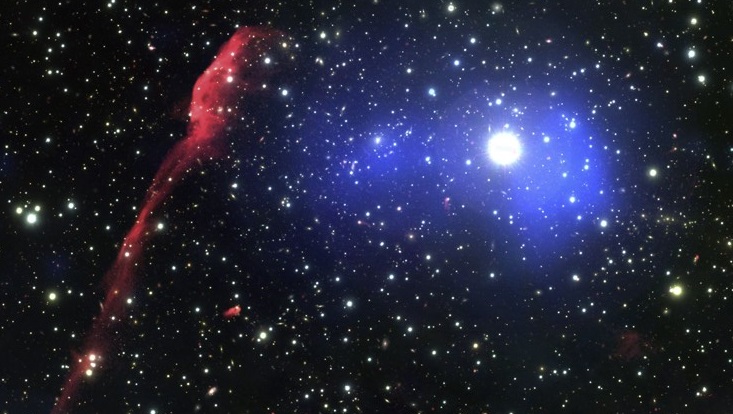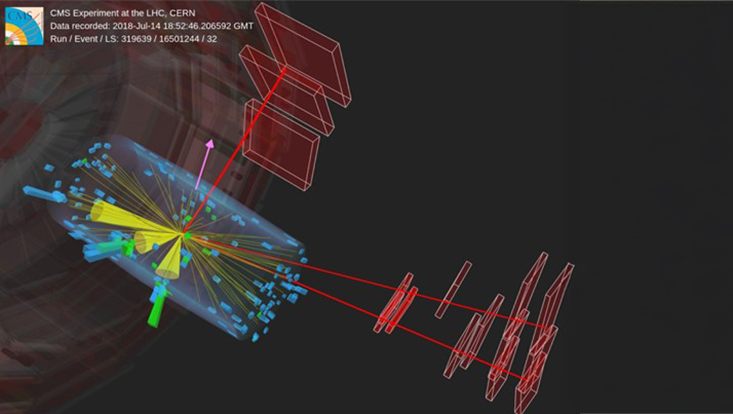Exploring the origin of unphysically high acceleration efficiencies of electrons in radio relics
24 October 2023

Photo: Rajpurohit et al. 2018
In a recently published paper, scientists from the Cluster of Excellence Quantum Universe David Smolinski (UHH), Denis Wittor (UHH), Franco Vazza (University of Bologna, Istituto Nazionale di Astrofisica and UHH) and Marcus Brüggen (UHH) evaluate the origin of unphysically high acceleration efficiencies of electrons in radio relics.
What comes to your mind if you think of the biggest particle accelerators, perhaps the Large Hadron Collider at CERN? The cosmos can go much bigger, faster, and more energetic than that! Surprisingly the biggest particle accelerators are actually in space and are called galaxy clusters. Galaxy clusters are the biggest gravitationally bound structures in our universe and consist mainly of dark matter and hot plasma. That plasma has temperatures between 10 and 100 million degrees and the galaxies themselves only contribute little to the total mass of the clusters. Galaxy clusters can collide, and during those collisions shock waves can occur. Shock waves can be imagined quite similar to booms of supersonic planes but in the galaxy cluster's plasma. These shock waves are able to accelerate particles to very high energies. Then, the accelerated particles can start to emit radiation, which can be observed with radio telescopes on Earth. So, the shock starts to glow, which we call a radio relic.
While the physics behind radio relics might be well understood, many details of radio relics continue to baffle researchers. One of them is the acceleration efficiencies for particles in radio relics. One long-standing puzzle has been why the acceleration of electrons is so efficient.
To this end, Smolinski and collaborators have conducted detailed computer simulations.
They found that for relics typically the electrons that contribute most to the radio luminosity have been gone several times through shock in their lifetime and therefore also carry energy they got from previous shock events. On the other hand, typically the measurements of the acceleration efficiency derived from the radio luminosity assume that electrons do not carry the energy of previous shocks. Therefore, Smolinski et al. argue that the acceleration efficiency derived from this assumption is way too big. They computed for simulated relic acceleration efficiencies with the assumption that electrons have not experienced any shocks (i.e., acceleration from the thermal pool) and compared it to a scenario where the electrons experience multiple shocks. They found that assuming acceleration from the thermal pool leads to an overestimation of the relic’s acceleration efficiency by a factor of roughly 2000.
In the end, our researchers were able to show that the current measurement routine leads to wrong results for the acceleration efficiency since it is assuming a single shock scenario for calculating the acceleration efficiency.


